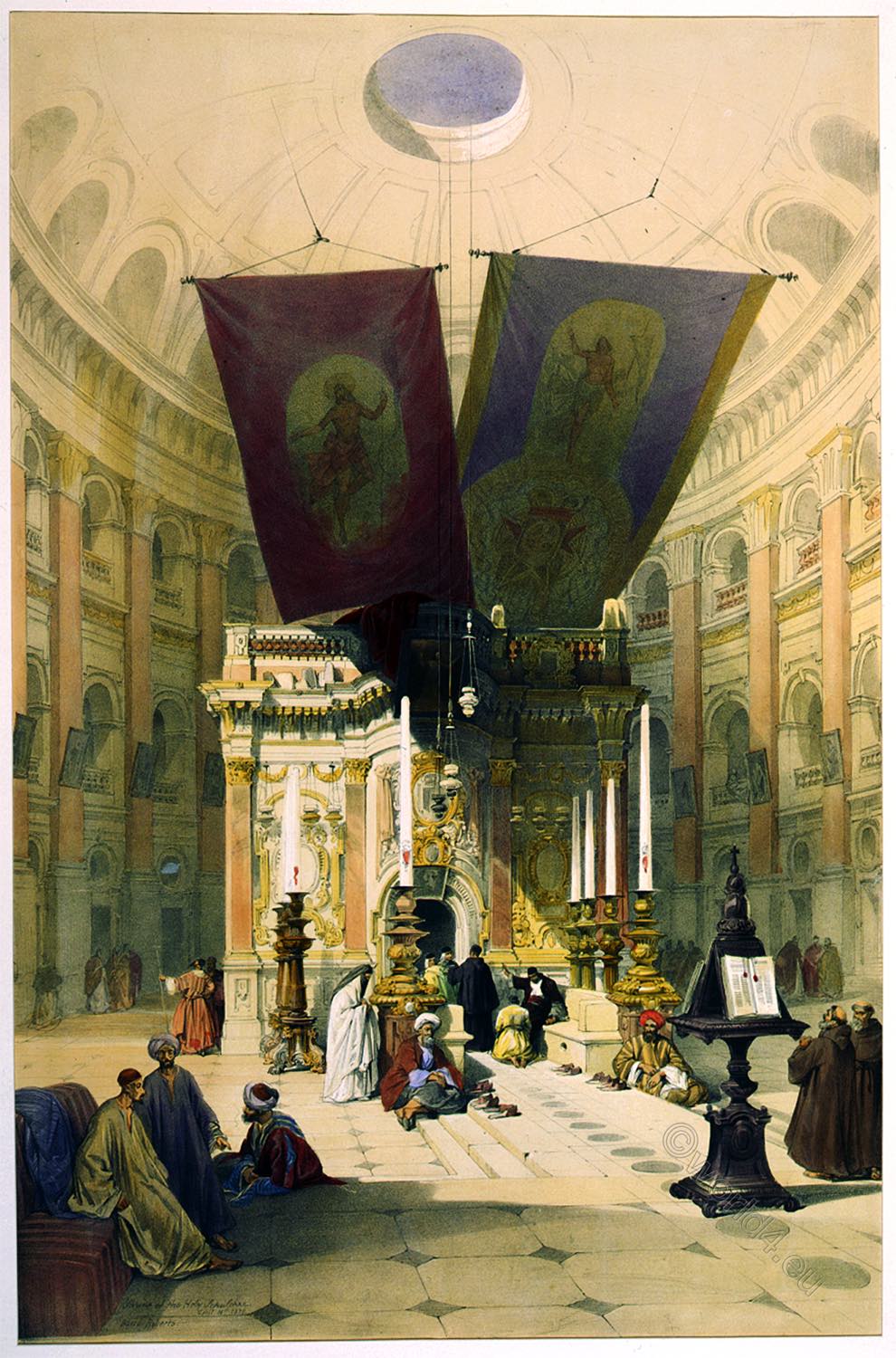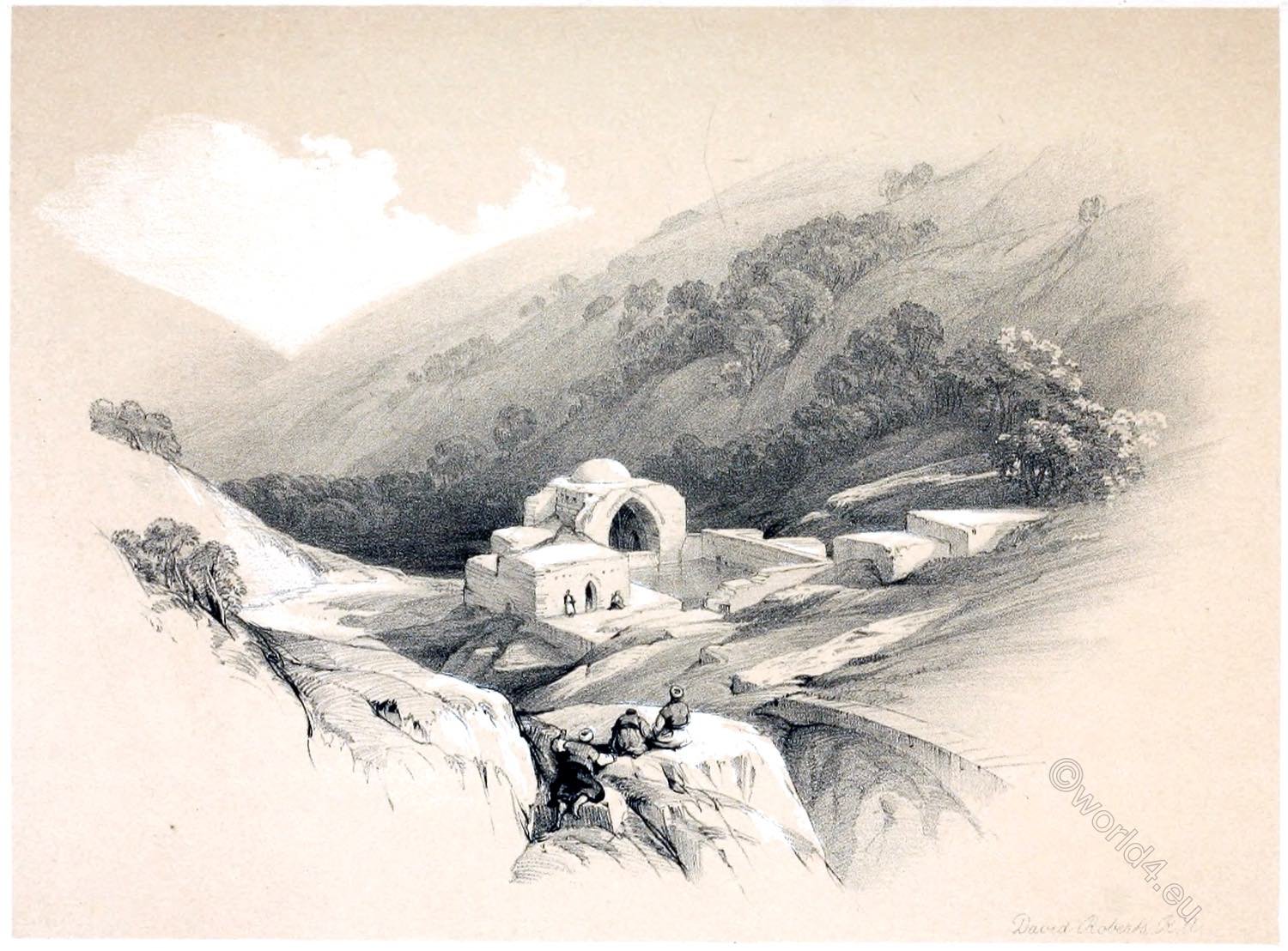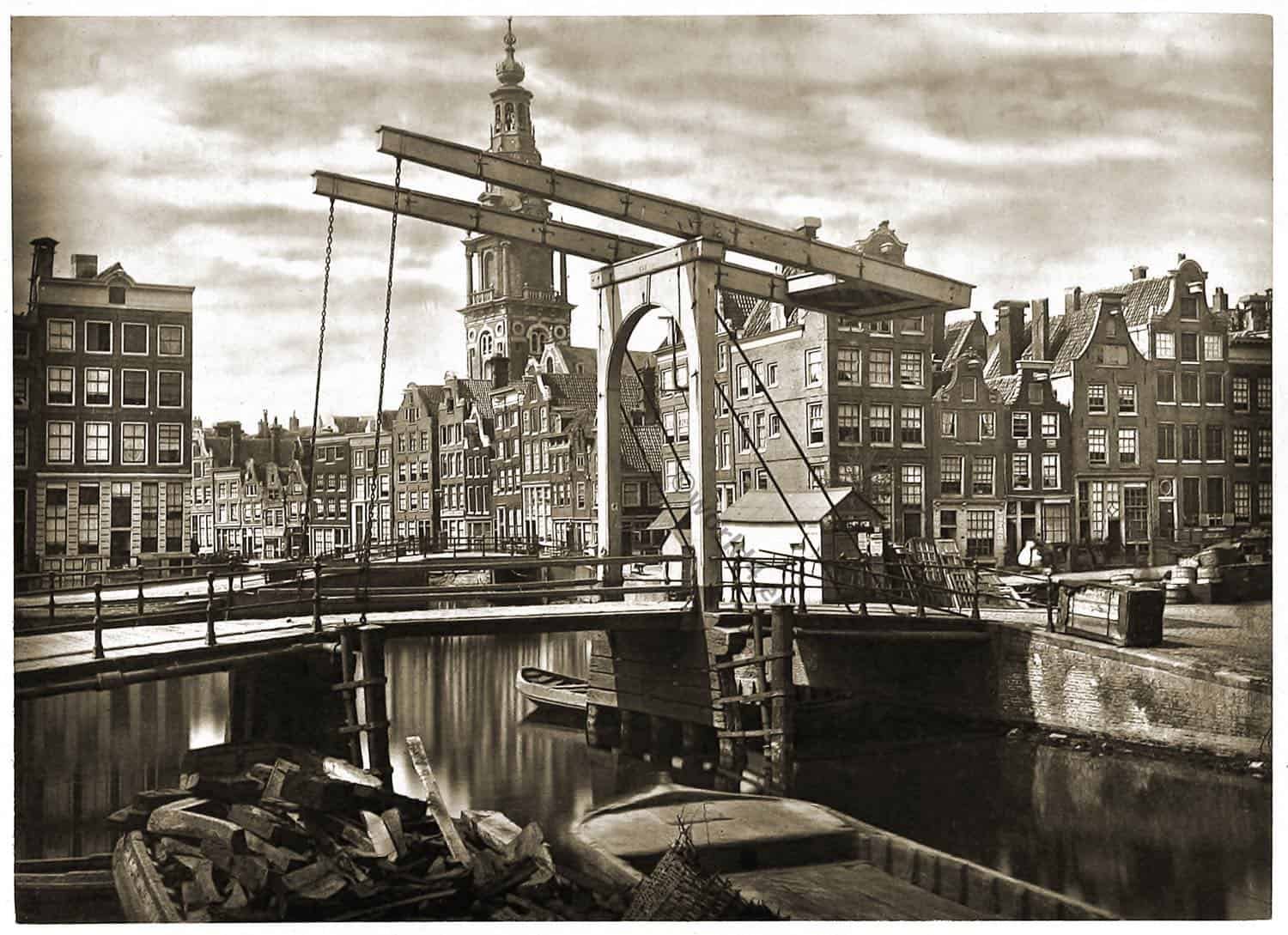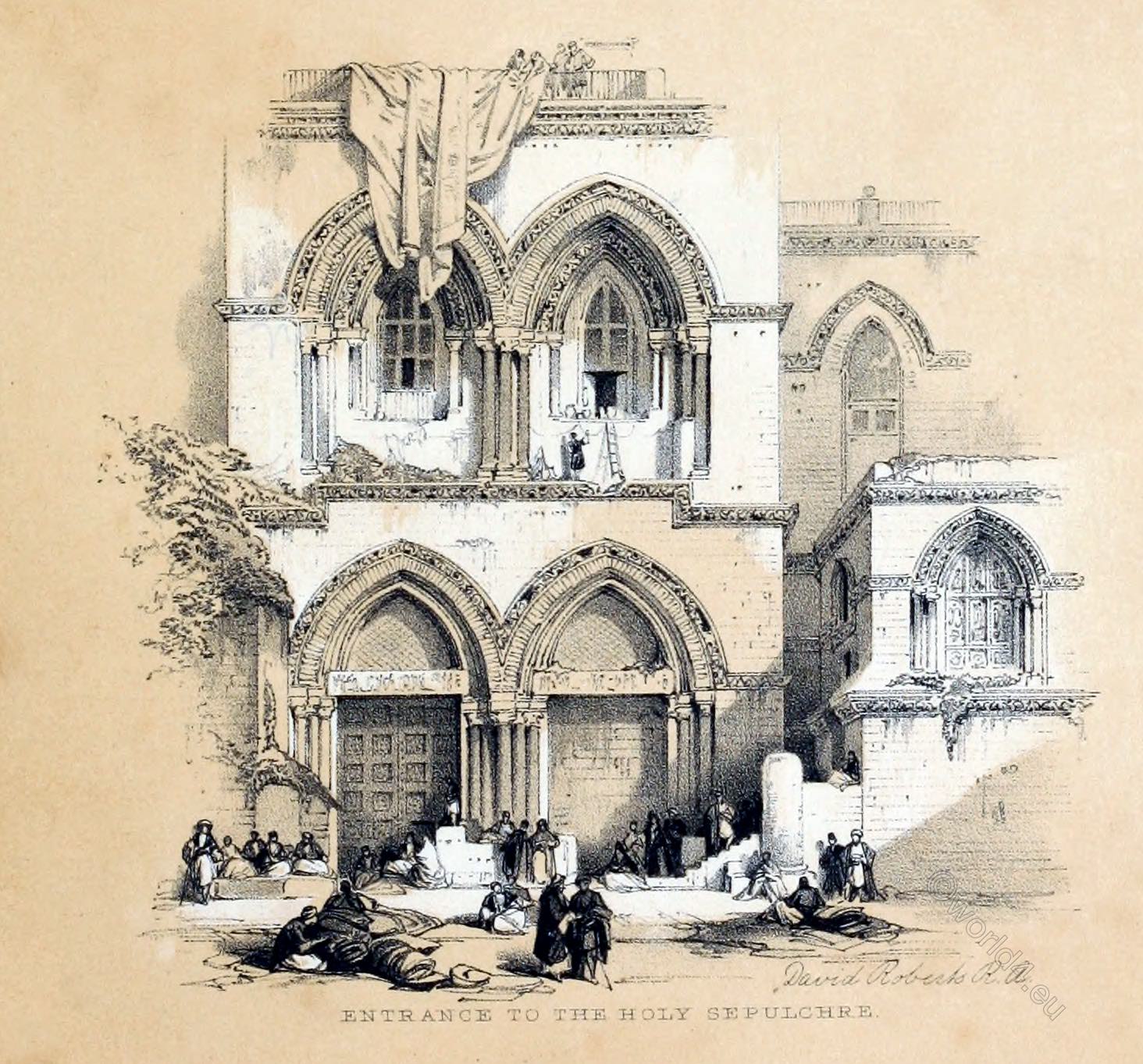
JERUSALEM FROM THE NORTH
by David Roberts
The view from this point is regarded as the most striking and extensive of Jerusalem. The road, first descending into the Valley of Jehoshaphat, crosses the ridge which extends between Scopas and the Mount of Olives. The city is thus seen diagonally, and the view includes the Great Mosque and the deep valley, while, at the same time, the domes and minarets are seen with better effect than from the other summit of Olivet. 1)
Lamartine, the celebrated poet of France, has described with picturesque power this scene, with all its associations, the noblest and most affecting on the globe.
“After ascending a second mountain, higher and more naked than the first, the horizon expanded all at once, and gave a view of the whole space which stretches between the last peaks of Judea, on which we stood, and the high mountain-chain of Arabia.

Beyond the lesser hills beneath our feet, broken and split into grey and crumbling rocks, the eye distinguished nothing but a dazzling expanse, so similar to a vast sea, that the illusion was complete. But on the edge of this imaginary ocean, about a league from us, the sun glittered on a square tower, a lofty minaret, and the broad yellow walls of some buildings which crowned the summit of a low hill; it was Jerusalem!
“It stood out somberly and heavily from the blue depths of heaven and the black sides of the Mount of Olives. Beyond those lofty walls and domes a high and broad hill arose, upon a second outline, darker than that which bore the city, and bounding the horizon.
“Nearer to us, and immediately beneath our eye, was nothing but a stony wilderness, which serves as an approach to the ‘City of Stones.’ Those immense imbedded stones, of an uniform rocky grey, extended, from the spot where we stood, to the gates.
“The last steps that are made before opening on Jerusalem, are hollowed through a dismal and irremovable avenue of those rocks, which rise ten feet above the head of the traveller, and permit only a sight of the sky immediately above.
“We were in this last mournful avenue, and had marched in it for a quarter of an hour, when the rocks, retiring on a sudden to the right and left, brought us face to face with the walls of Jerusalem.
“A space of a hundred paces was now alone between us and the gate of Bethlehem. This interval, barren and undulating, like the banks which surround fortified places in Europe, extended to the right into a narrow vale, sinking in a gentle slope. To the left were five old olive trunks, bent beneath the weight of age, which might be called petrified, like the sterile soil from which they sprang. The Gate, commanded by two towers with Gothic battlements, deserted and silent as the entrance of a ruined castle, lay open before us.
“We remained a few minutes in motionless contemplation. We burned with desire to pass it, but the plague was now in its most intense state in the city, and we did not enter; but turning to the left, we slowly descended, skirting the high walls built behind a deep ravine, in which we perceived, from time to time, the stone foundations of Herod’s ancient inclosure. At every step we met Turkish burial-places, with tombstones surmounted by a turban. Those cemeteries, which the plague was nightly peopling, were filled with groups of Turkish and Arab women, weeping for their husbands or fathers.
“Those groups, seated there the whole day to weep, were the only sign of human occupancy that appeared in our circuit round Jerusalem. No noise, no smoke arose; and some pigeons, flying from the fig-trees to the battlements, or from the battlements to the edges of the sacred pools, gave the only movement in this mournful scene.” 2)
1) Biblical Researches, vol. i. p. 108. 2) Travels in the East.
Source: The Holy Land, Syria, Idumea, Arabia, Egypt, & Nubia, by David Roberts, George Croly, William Brockedon. London: Lithographed, printed and published by Day & Son, lithographers to the Queen. Cate Street, Lincoln’s Inn Fields, 1855.
© Jerusalem from the north between 1898 and 1946. (Library of Congress. Matson (G. Eric and Edith) Photograph Collection.)
Continuing






